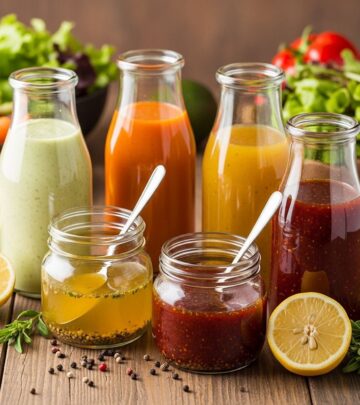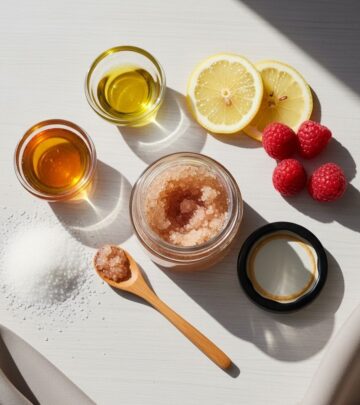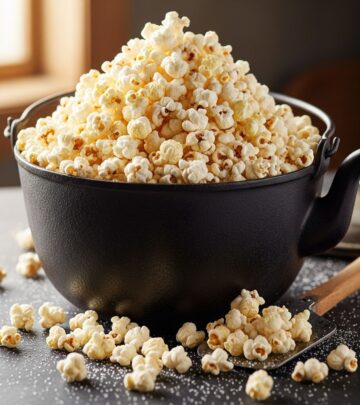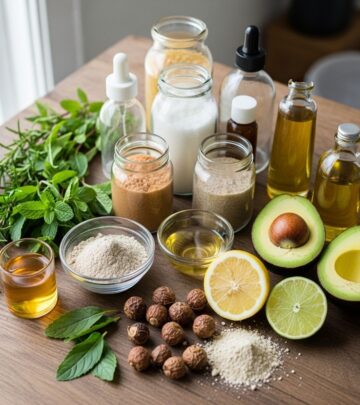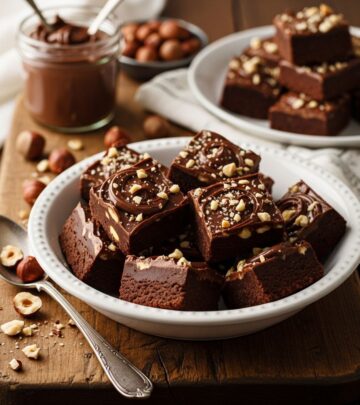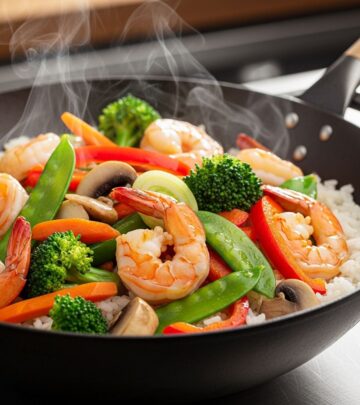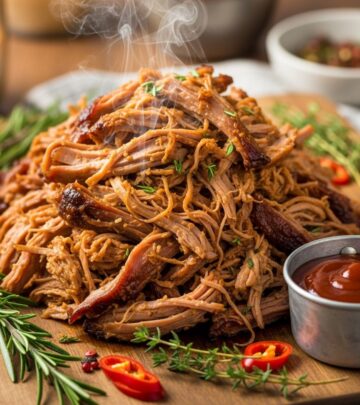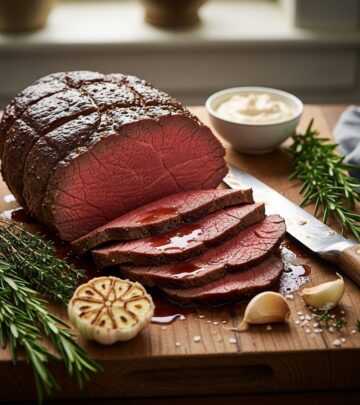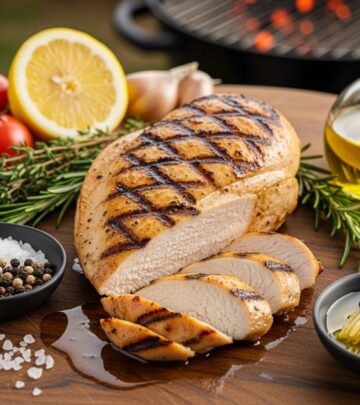Roasted Butternut Squash Recipe: Guide To Caramelized Perfection
Transform ordinary butternut squash into a caramelized, flavor-packed side dish with this foolproof roasting method
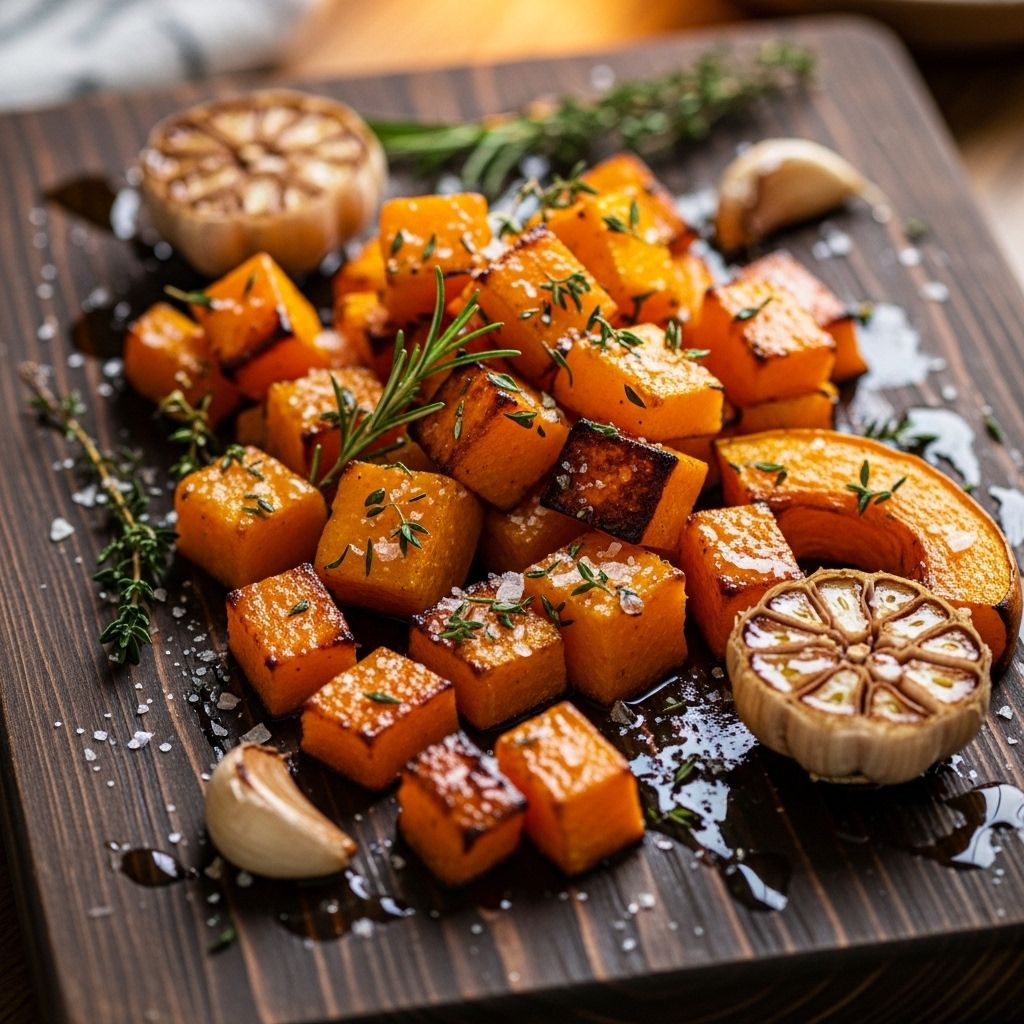
Image: HearthJunction Design Team
Simple Roasted Butternut Squash
Butternut squash stands as one of fall’s most versatile and nutritious treasures. With its sweet, nutty flavor and bright orange flesh, this winter squash transforms into something truly magical when roasted properly. This simple roasting method enhances the natural sweetness of butternut squash while creating caramelized edges and a tender interior that works beautifully as a side dish or as a component in countless recipes. Whether you’re a seasoned cook or just starting your culinary journey, mastering roasted butternut squash is an essential skill for autumn cooking.
In this comprehensive guide, we’ll walk through everything you need to know about selecting, preparing, and roasting butternut squash to perfection. You’ll discover how simple ingredients like olive oil, salt, and pepper can elevate this humble vegetable into a dish worthy of any table. We’ll also explore the impressive nutritional profile that makes butternut squash not just delicious but incredibly good for you.
Ingredients
The beauty of this recipe lies in its simplicity. With just a few basic ingredients, you can create a dish that’s both elegant and satisfying:
- 1 butternut squash (about 2-3 pounds)
- 2 tablespoons olive oil
- Sea salt, to taste
- Freshly ground black pepper, to taste
That’s it! No fancy seasonings or complicated techniques are needed to bring out the natural sweetness and earthy flavor of butternut squash. The olive oil helps achieve that perfect caramelization while the salt and pepper enhance the squash’s inherent flavor profile. Of course, once you’ve mastered the basic technique, you can experiment with additional seasonings like cinnamon, nutmeg, rosemary, thyme, or even a drizzle of maple syrup for variety.
Nutritional Information
Before we dive into preparation, it’s worth highlighting why butternut squash deserves a regular place in your meal rotation. This nutritional powerhouse delivers impressive health benefits while being relatively low in calories.
A one-cup (205-gram) serving of cooked butternut squash provides:
| Nutrient | Amount | % of Daily Value |
|---|---|---|
| Calories | 82 | 4% |
| Carbohydrates | 22 grams | 7% |
| Fiber | 7 grams | 26% |
| Protein | 2 grams | 4% |
| Fat | 0 grams | 0% |
| Vitamin A | 1140 μg | 457% |
| Vitamin C | 31 mg | 34% |
| Vitamin E | 2.64 mg | 18% |
| Potassium | 582 mg | 12% |
| Magnesium | 59.4 mg | 15% |
| Manganese | 0.35 mg | 15% |
Butternut squash is particularly rich in provitamin A carotenoids, which your body converts into vitamin A – essential for immune function, vision, and cellular growth. Its high fiber content supports digestive health while helping you feel full longer. The impressive vitamin C content boosts immune function and collagen production, making this vegetable an excellent choice during cold and flu season.
Preparation
Preparing butternut squash might seem intimidating at first, especially if you’re new to working with winter squash. However, with the right technique, it becomes a straightforward process:
Step 1: Preheat Your Oven
Set your oven to 400°F (200°C). This temperature is ideal for roasting vegetables as it’s hot enough to create caramelization without burning the outside before the inside cooks through. Position your oven rack in the center for even heat distribution.
Step 2: Prepare the Butternut Squash
Start by washing the exterior of the squash thoroughly under cool running water to remove any dirt. Pat it dry with a clean kitchen towel.
Using a sharp, sturdy knife, carefully cut off both ends of the squash. The flat ends will provide stability for the next steps. Stand the squash upright on one of the flat ends and carefully slice it in half lengthwise. A vegetable peeler can make quick work of removing the tough skin, but you can also use your knife if needed.
Once peeled, use a spoon to scoop out the seeds and stringy pulp from the center cavity. Don’t discard the seeds – they can be roasted separately for a nutritious snack, similar to pumpkin seeds.
Finally, cut the squash into uniform 1-inch cubes. Aiming for pieces of similar size ensures they’ll cook at the same rate, preventing some pieces from burning while others remain undercooked.
Step 3: Season the Squash
Place the cubed squash in a large mixing bowl. Drizzle with olive oil and sprinkle with salt and pepper. Using clean hands or a spatula, toss the squash until all pieces are evenly coated with oil and seasonings. The oil not only adds flavor but also helps the squash roast properly, creating those desirable caramelized edges.
Step 4: Arrange for Roasting
Transfer the seasoned squash to a large baking sheet lined with parchment paper for easy cleanup. Arrange the pieces in a single layer with some space between each cube. Overcrowding the pan will cause the squash to steam rather than roast, preventing proper caramelization and resulting in a softer texture.
Cooking Instructions
Step 1: Roast the Squash
Place the baking sheet in your preheated oven and roast for 25-30 minutes. For optimal browning, rotate the pan halfway through cooking time and use a spatula to flip the squash cubes. You’ll know the squash is perfectly done when the edges have turned golden brown and caramelized, and a fork easily pierces the flesh.
Step 2: Check for Doneness
The exact cooking time can vary based on your oven and the size of your squash cubes. Start checking for doneness around the 20-minute mark. The squash should be tender throughout but not mushy, with nicely caramelized exteriors that add depth of flavor and visual appeal.
Step 3: Serve
Once done, remove from the oven and let the squash cool slightly before serving. This brief resting period allows the flavors to settle and prevents burning your mouth on piping hot squash.
Serving Suggestions
Roasted butternut squash is incredibly versatile and can be enjoyed in numerous ways:
- As a simple side dish alongside roasted chicken, grilled steak, or baked fish
- Tossed into salads for added color, texture, and nutritional value
- Stirred into risotto or pasta for a creamy, sweet element
- Pureed into soups or sauces
- Added to grain bowls with quinoa, farro, or brown rice
- Mashed with a touch of butter and maple syrup for a sweeter variation
The natural sweetness of roasted butternut squash pairs beautifully with both savory herbs like sage, rosemary, and thyme, as well as sweet spices like cinnamon, nutmeg, and cloves. It’s this versatility that makes it such a valuable addition to your culinary repertoire.
Storage and Reheating
Roasted butternut squash stores well, making it perfect for meal prep or making ahead for holiday gatherings:
Refrigerator: Store cooled roasted squash in an airtight container in the refrigerator for up to 5 days.
Freezer: For longer storage, freeze roasted squash in a single layer on a baking sheet, then transfer to freezer bags or containers once frozen solid. Frozen roasted squash will maintain quality for up to 3 months.
Reheating: The best way to reheat roasted squash is in a 350°F (175°C) oven for about 10 minutes until warmed through. This method helps maintain the caramelized texture. Microwaving works in a pinch but may make the squash softer. If using frozen squash, thaw in the refrigerator overnight before reheating for best results.
Tips for Perfect Roasted Butternut Squash
Elevate your roasted butternut squash with these professional tips:
- Don’t skimp on oil: While you don’t want to drown the squash, ensure each piece gets a light coating of oil for proper caramelization.
- Use high heat: Roasting at 400°F (200°C) or even 425°F (220°C) helps develop those delicious caramelized edges.
- Give it space: Arrange squash pieces with some room between them to promote browning rather than steaming.
- Season generously: Winter squash can handle robust seasoning, so don’t be shy with salt and pepper.
- Add aromatics: For extra flavor, toss a few unpeeled garlic cloves or sprigs of hardy herbs like rosemary or thyme onto the roasting pan.
Variations and Flavor Combinations
Once you’ve mastered the basic recipe, try these delicious variations:
Sweet Options:
- Maple-Cinnamon: Toss with 1 tablespoon maple syrup and ½ teaspoon cinnamon before roasting
- Brown Sugar-Pecan: Sprinkle with brown sugar during the last 10 minutes of roasting and top with toasted pecans before serving
- Honey-Ginger: Add 1 tablespoon honey and 1 teaspoon grated fresh ginger to the olive oil mixture
Savory Options:
- Herb-Roasted: Add 1 tablespoon fresh chopped rosemary, thyme, or sage before roasting
- Spicy: Sprinkle with ¼ teaspoon cayenne pepper or red pepper flakes for heat
- Garlic-Parmesan: Toss with 3 minced garlic cloves before roasting, then sprinkle with freshly grated Parmesan cheese just before serving
Health Benefits of Butternut Squash
Beyond its delicious taste, butternut squash offers impressive health benefits that make it a nutritional superstar:
Immune Support: The high vitamin A content (over 450% of your daily needs in just one cup) helps maintain healthy immune function. Combined with significant vitamin C levels, butternut squash provides excellent support during cold and flu season.
Eye Health: Butternut squash contains lutein and zeaxanthin, carotenoids that protect your eyes from harmful high-energy light waves like ultraviolet rays. These compounds may reduce the risk of age-related macular degeneration and cataracts.
Digestive Health: With nearly 7 grams of fiber per cup, butternut squash supports healthy digestion, helps prevent constipation, and promotes the growth of beneficial gut bacteria.
Heart Health: The potassium content helps regulate blood pressure, while the fiber can help lower cholesterol levels, both contributing to cardiovascular health.
Antioxidant Protection: The vibrant orange color indicates the presence of powerful antioxidants that combat cellular damage from free radicals, potentially reducing inflammation and lowering the risk of chronic diseases.
Frequently Asked Questions (FAQs)
Q: How do I select the best butternut squash?
A: Look for butternut squash that feels heavy for its size with a matte, beige skin (not glossy). Avoid squash with green patches, cuts, or soft spots. The stem should be intact, firm, and dry.
Q: Can I roast butternut squash without peeling it first?
A: Yes, the skin is technically edible after roasting, though it remains somewhat tough. If roasting halves instead of cubes, you can scoop the flesh away from the skin after cooking.
Q: How can I make cutting butternut squash easier?
A: Microwave the whole squash for 2-3 minutes first to soften it slightly. Use a sharp, heavy knife, and create a flat surface by cutting off the ends before attempting to halve it lengthwise.
Q: Is butternut squash keto-friendly?
A: Butternut squash is relatively high in carbohydrates (about 22g per cup), so it’s generally not recommended for strict ketogenic diets, but can be consumed in small amounts on more moderate low-carb plans.
Q: Can I substitute butternut squash in recipes calling for pumpkin?
A: Yes, roasted and pureed butternut squash works excellently as a 1:1 substitute for pumpkin in most recipes, including pies, soups, and quick breads.
Q: How long does raw butternut squash last?
A: Whole, uncut butternut squash can last 1-3 months when stored in a cool, dry place away from direct sunlight. Once cut, refrigerate unused portions and use within 4-5 days.
With this simple roasting method, you can transform an ordinary butternut squash into a versatile side dish that pairs beautifully with almost any main course. The natural sweetness that develops during roasting, combined with the impressive nutritional profile, makes this humble vegetable a standout addition to your regular cooking repertoire. Whether you stick with the basic recipe or experiment with different flavor combinations, roasted butternut squash deserves a place at your table throughout the fall and winter months.
References
- https://www.healthline.com/nutrition/butternut-squash
- https://www.webmd.com/food-recipes/butternut-squash-health-benefits
- https://www.eatingwell.com/health-benefits-of-butternut-squash-8557372
- https://www.verywellhealth.com/butternut-squash-8426401
- https://www.noom.com/blog/nutrition/is-butternut-squash-healthy-exploring-the-nutritional-benefits/
Read full bio of medha deb

